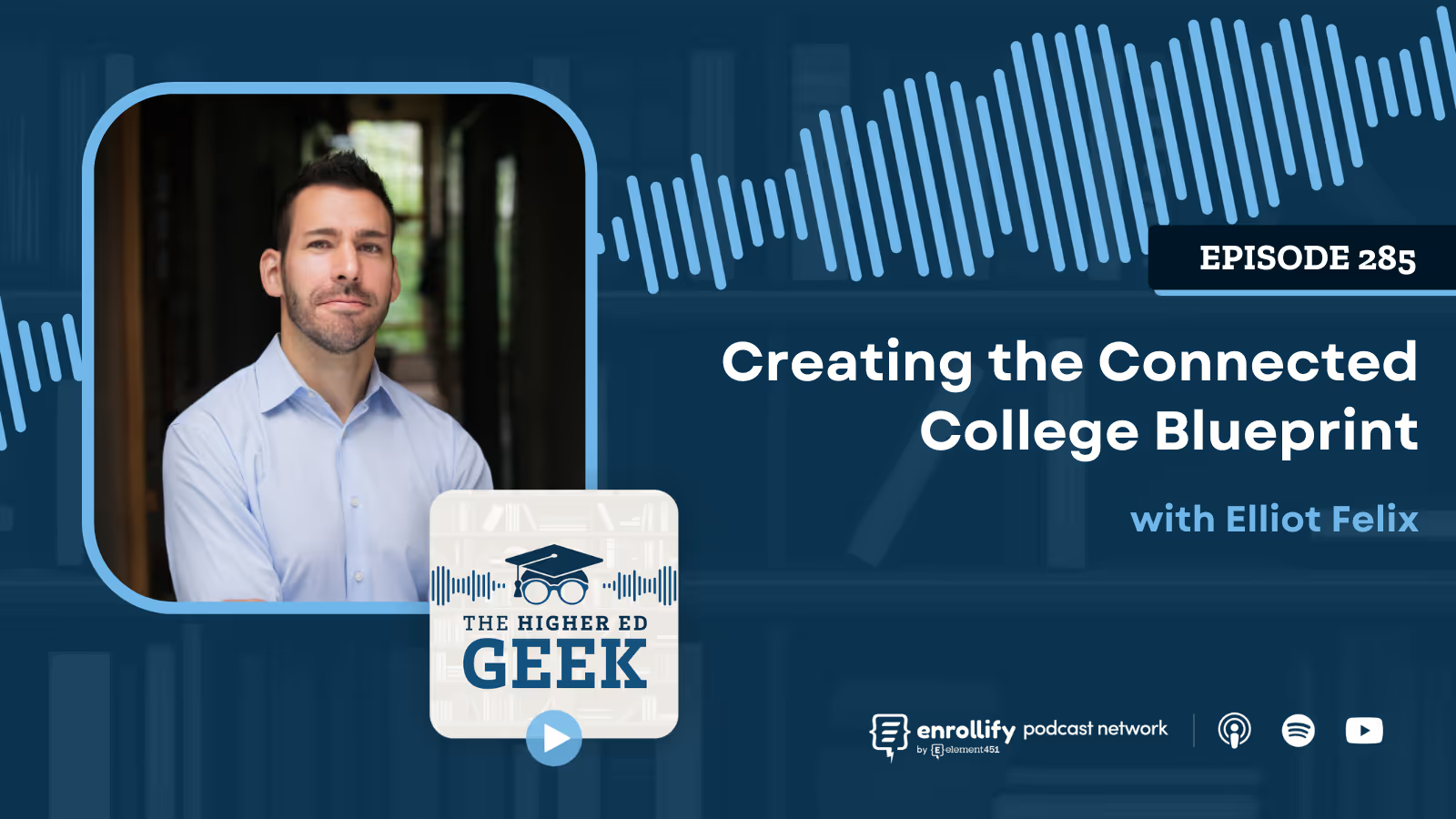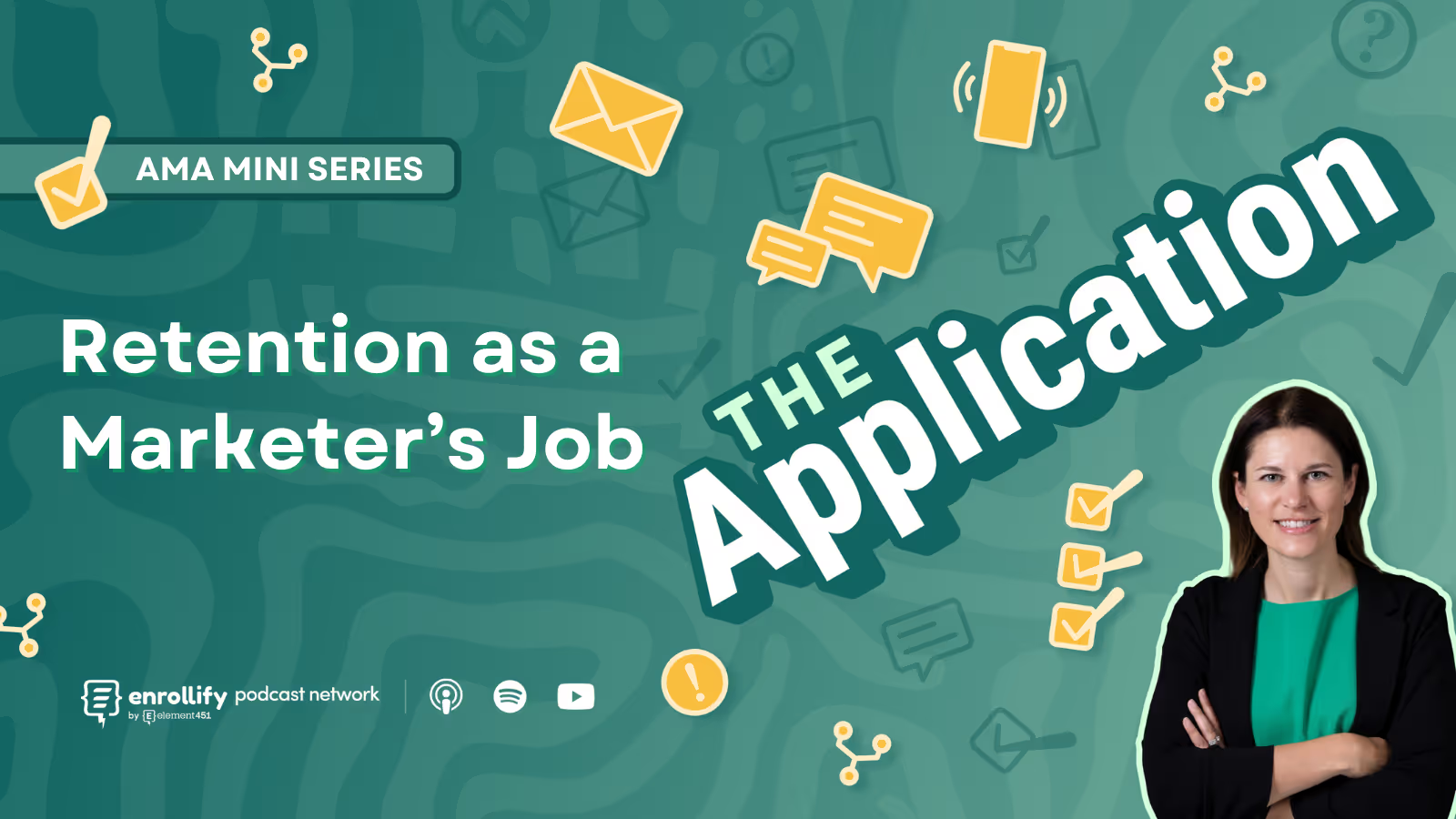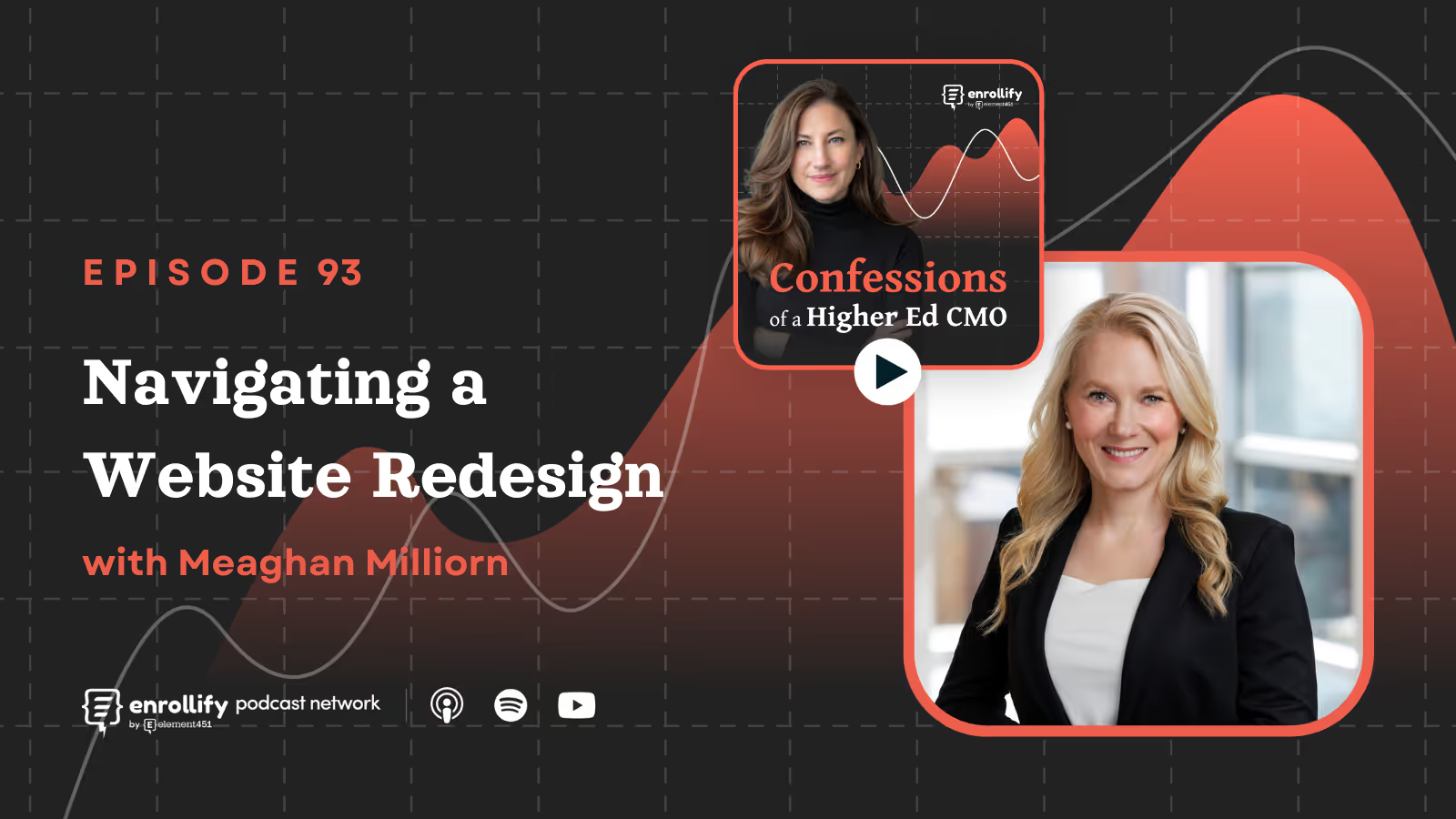About the Episode
Got a story to tell? An innovative idea to share? Fill out our guest nomination form and let's chat!
About the Episode:
www.elliotfelix.com/connectedcollege
This week, Dustin is pleased to welcome back higher ed design strategist and author Elliot Felix to discuss his forthcoming book, The Connected College. Together, they unpack what it takes to build institutions that work better together—from breaking down silos to smarter strategy execution. Elliot brings the wisdom of over 100 campus collaborations, offering a hopeful and highly practical roadmap for change. If your institution is wrestling with disconnection, dwindling resources, or just too many redundant tools and services, this episode is for you.
Key Takeaways
- Design Thinking Is a Strategic Imperative in Higher Ed
Felix emphasizes how design can unify fragmented student support systems and enable institutions to work better together—crucial in today's resource-constrained environment. - The Difference Between a Strategy and a Plan Matters
A “strategic plan” often conflates action with vision. Felix calls for institutions to focus on true strategy—making deliberate choices to prioritize and focus institutional energy. - Student Success Is a Team Sport
Collaboration—both internally and externally—is essential for student success. Whether through co-located services, shared tools, or cross-campus partnerships, alignment is key. - Small Wins Spark Big Change
Organizational transformation doesn’t require sweeping overhauls. Start with audits, post-it note exercises, or bundling small processes together to improve efficiency and outcomes. - Data + Empathy = Real Change
Felix highlights that both quantitative data and qualitative listening are critical to driving institutional change—and that true buy-in only happens when people co-create the future.
Why did Elliot Felix write The Connected College now?
Elliot’s background in design led him to see a persistent problem: disconnection within institutions. He was inspired to write The Connected College to provide a framework for using design thinking to integrate support services, reduce redundancies, and foster collaboration. In his view, design isn’t just about aesthetics—it’s about understanding people and creating systems that work better for everyone involved.
What’s wrong with the way higher ed approaches strategic planning?
Felix critiques the conventional “strategic plan” for often being more of a laundry list than a real strategy. He argues for separating the strategy—which involves making clear, focused choices—from the plan, which is about implementation. Without this distinction, institutions risk diluting their efforts and trying to do too much with too little impact.
How does collaboration actually happen within complex institutions?
Collaboration needs structure, not just good intentions. Elliot offers several frameworks: co-locating services, creating communities of practice, using shared tools, and offering collaborative grants. Real change starts when departments move from operating in silos to aligning their efforts intentionally around shared student outcomes.
What’s an example of this in action?
Felix shares the story of the “iZone” at the University of Rochester—a space where students could pitch, develop, and showcase project ideas. It only worked because the library, IT, teaching center, and community partners aligned their efforts. It’s a case study in how cross-functional teamwork can bring a student-centered initiative to life.
How can institutions begin this transformation without getting overwhelmed?
Don’t start with a massive overhaul. Felix recommends small, actionable steps—such as listing all support services or systems on post-its to surface redundancies and gaps. This simple exercise can often spark discussions about prioritization, consolidation, and improvement.
How does data support effective change management?
While benchmarking and analytics are essential, Felix emphasizes that data must be paired with empathy. Institutions must involve stakeholders in the design process to ensure that changes stick. Co-creation builds ownership, and ownership drives follow-through.
What final advice does Elliot give to higher ed leaders?
Start small, stay focused, and work collaboratively. Whether it's developing a one-page strategy memo or piloting a new service model, progress often comes through simple, iterative actions. And don’t underestimate the power of working in cohorts with other institutions—shared learning can accelerate transformation.
About the Show: The Higher Ed Geek Podcast explores the impact of edtech on the student experience by speaking with diverse leaders from institutions, companies, and nonprofit organizations. Each week we aim to provide an engaging, fun, and relevant dose of professional development that honors the wide range of work happening all across the higher ed ecosystem. Come geek out with us! The Higher Ed Geek Podcast is hosted by Dustin Ramsdell and is a proud member of the Enrollify Podcast Network.
Connect With Our Host:
Dustin Ramsdell
About The Enrollify Podcast Network:
The Higher Ed Geek is a part of the Enrollify Podcast Network. If you like this podcast, chances are you’ll like other Enrollify shows too!
Some of our favorites include Generation AI.
Enrollify is produced by Element451 — the next-generation AI student engagement platform helping institutions create meaningful and personalized interactions with students. Learn more at element451.com.















